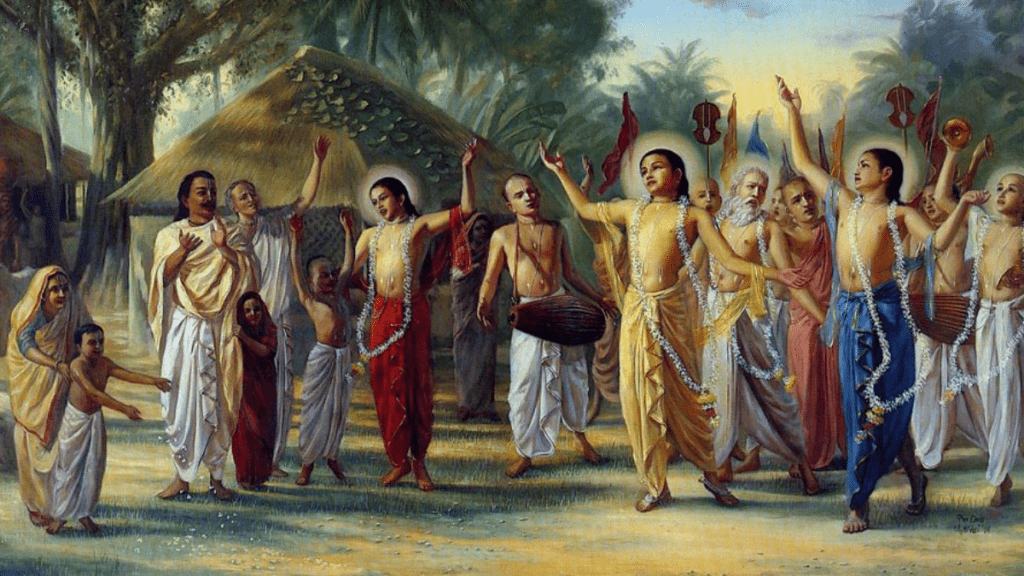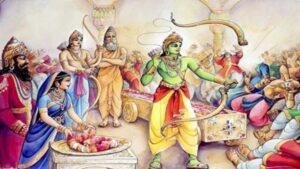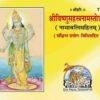Bhakti Yoga, also known as the path of devotion, is one of the four main paths of yoga. It involves the practice of cultivating a deep and personal relationship with the divine through acts of love and devotion. In this blog, we will explore the different paths of devotion within Bhakti Yoga and how they can help us deepen our spiritual practice.
What exactly is Bhakti Yoga?
Bhakti Yoga is a Sanskrit phrase that means union; yoga is derived from the Sanskrit root yuj, and some English words and phrases that could be used as translations for Bhakti include “Love,” “Devotional Love,” “Universal Love,” “Pure Love,” and “Divine Love.”
Bhakti is who we are, not what we have or do. Bhakti Yoga is the realization that the Supreme Consciousness is everything and nothing else exists. With this awareness, the yogi who becomes a bhakti yogi, or bhakta, loses any sense of separateness from that all-encompassing power, as well as all identities defined by the world, and merges, as if diving into a vast, infinite ocean of all-encompassing, supreme love.
Bhakti Yoga, or the vibrant sense of oneness, is also known as a devotional path that leads to self-realization rooted in intense love and a state of complete surrender to God.
As a form of union with the infinite, the Bhakti yoga tradition must be as old as human civilization. Formally, it was recognised in the Shvetashvatara Upanishad as a way of expressing intense devotion to God. Much later, the Bhagavad Gita depicted it as a “marga,” or path to the Ultimate Truth. It is expanded upon in Bhagavatam as aphorisms by Narada in Narada’s Bhakti Sutras.

How does one go about practising Bhakti Yoga?
Bhakti is essentially a state of mind that is filled with love, devotion, and surrender. Many people come into contact with Bhakti Yoga through:
- Chanting is a type of devotional or prayerful singing.
- Being a God-fearing servant.
- Japa, or remembering God without ceasing (Rosary).
- Puja is a ceremonial expression of thanks.
- Worship of a divine representation.
- Appreciating nature’s wonder and beauty as a manifestation of the Divine.
- Creating an altar with a favorite image or representation of the Divine and offering flowers, fruits, lamps, or incense, or mentally worshiping.
These activities provide a tangible way to acknowledge the presence of Divinity everywhere and in everything. Bhakti Yoga teaches everyone that love is one’s natural state.
You have the opportunity to multiply the joy and celebration of your own existence in a loving relationship with a higher self by sharing yourself and this god realization. This joy and celebration take the form of a loving and blissful community when shared with other devotees and yoga practitioners.
Surrendering to the love that you are allows you to transcend worldly sorrow and pain and experience total freedom in the most straightforward way possible.
The different paths of devotion within Bhakti Yoga and how they can help us deepen our spiritual practice
The first path of devotion is known as the path of love and surrender. This path emphasizes the importance of surrendering oneself completely to the divine. It involves letting go of our ego and our attachments, and allowing ourselves to be completely immersed in the love and grace of the divine. This path requires a great deal of trust and faith, as it involves surrendering control over our lives and trusting that the divine will guide us in the right direction.
The second path of devotion is known as the path of service. This path involves dedicating oneself to the service of others as a way of expressing love and devotion to the divine. It involves performing acts of selfless service and putting the needs of others before our own. This path teaches us to see the divine in every person we meet and to treat them with love and compassion.
The third path of devotion is known as the path of knowledge. This path involves studying and contemplating the nature of the divine as a way of deepening our understanding and love for the divine. It involves studying sacred texts and teachings, and meditating on the nature of the divine. This path teaches us to see the divine in all things and to develop a deep and profound understanding of the nature of reality.
The fourth path of devotion is known as the path of devotion itself. This path involves expressing love and devotion to the divine through rituals, ceremonies, and other forms of devotional practices. It involves singing, dancing, chanting, and other forms of worship as a way of expressing our love and devotion to the divine. This path teaches us to cultivate a deep and personal relationship with the divine through acts of love and devotion.
Each of these paths of devotion offers a unique approach to deepening our spiritual practice. By exploring each of these paths, we can find the one that resonates with us the most and use it to deepen our connection with the divine.
In addition to these four paths of devotion, there are many other practices and techniques that can help us deepen our spiritual practice within Bhakti Yoga. For example, daily prayer and meditation can help us develop a deeper connection with the divine and cultivate a sense of inner peace and serenity. Reading and studying sacred texts and teachings can also provide us with guidance and inspiration on our spiritual journey.
Another important practice within Bhakti Yoga is the practice of mantra repetition. Mantras are sacred words or phrases that are repeated as a way of invoking the divine. By repeating a mantra, we can focus our mind and bring our attention to the present moment, while also cultivating a deep sense of devotion and love for the divine.

Mantra Chanting
Your mind can dissolve and rest while your spirit takes over by chanting sound vibrations repeatedly. The sounds seep into every cell of your body. You are liberated from repetitive thoughts. Every mantra means infinity and takes you beyond your mind’s cognition.
Satsang, which means “company of truth,” is a time and place where devotees on a common spiritual path gather to chant mantras, also known as “kirtan.”
The ancient Hindu saints simplified Vedic chants so that anyone could learn them. They made the powerful sounds of mantras available to all of us out of compassion. These sounds have a profound effect on consciousness. We can communicate more effectively and efficiently by listening to them or chanting them.
Finally, the practice of seva or selfless service is an integral part of Bhakti Yoga. Seva involves serving others without any expectation of reward or recognition. By serving others, we can cultivate a sense of humility and compassion, while also developing a deeper connection with the divine.
Overall, Bhakti Yoga offers a rich and diverse set of practices and techniques that can help us deepen our spiritual practice and cultivate a deep and personal relationship with the divine. By exploring the different paths of devotion and finding the ones that resonate with us the most, we can develop a deeper understanding of the nature of the divine and bring more love and light into the world.
In conclusion, the art of Bhakti Yoga offers a powerful and transformative approach to deepening our spiritual practice. By cultivating a sense of love and devotion for the divine, and exploring the different paths of devotion within Bhakti Yoga, we can develop a deep and personal relationship with the divine, while also bringing more love and light into the world. Whether we choose to follow the path of love and surrender, the path of service, the path of knowledge, or the path of devotion itself, the practice of Bhakti Yoga offers a rich and diverse set of practices and techniques that can help us deepen our spiritual practice and connect with the divine in a meaningful way.



















Add comment